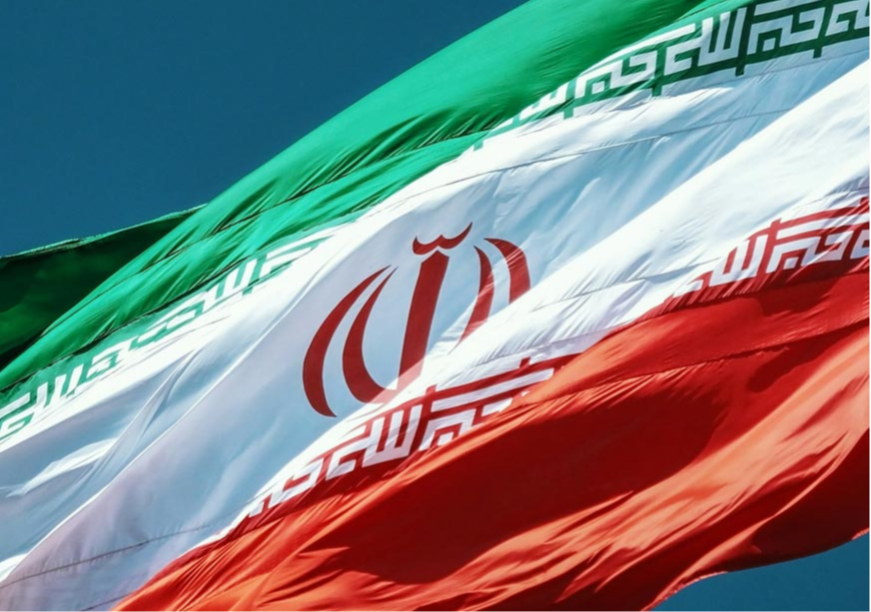-
CENTRES
Progammes & Centres
Location
Establishing Middle East WMD-free zones (MEWMDFZ) is an urgent requirement, not only for the region's stability but also for global security.

One of the most coveted objectives in global diplomacy concerning disarmament and preventing the spread of weapons of mass destruction (WMD) is the establishment of a Middle East WMD-free zone (MEWMDFZ). Given the region's tumultuous history marked by conflict and deep-seated distrust, coupled with instances of chemical weapons deployment in the past, the potential resurgence of WMD utilisation remains alarmingly plausible and concerning.
Given the region's tumultuous history marked by conflict and deep-seated distrust, coupled with instances of chemical weapons deployment in the past, the potential resurgence of WMD utilisation remains alarmingly plausible and concerning.
One critical milestone in this regard is the 1995 Review and Extension Conference of the Treaty on the Non-Proliferation of Nuclear Weapons (NPT). The undersigned parties of the NPT agreed to establish a Middle East nuclear-weapon-free zone (MENWFZ) by 2020. However, to date, no significant progress has been seen, and, with recent activities in the area, including Israel’s attacks on the Gaza Strip and Iran’s attacks on Israel and Israel’s response, promoting disarmament in this area is even more urgent.
The political dynamics and security concerns in the Middle East, including the long-standing Israeli-Arab conflict, have contributed to the complexities surrounding the establishment of a WMD-free zone. Israel, which allegedly possesses nuclear weapons but has never officially confirmed or denied it, is not a party to the NPT.
The United Nations (UN) and other international organisations have been involved in facilitating discussions and promoting dialogue among the countries in the region to advance the idea of a WMD-free zone. However, reaching a comprehensive agreement has proven difficult due to geopolitical tensions, security considerations, and the broader regional political landscape.
However, reaching a comprehensive agreement has proven difficult due to geopolitical tensions, security considerations, and the broader regional political landscape.
However, nuclear weapons are not the only consideration in regions with a vulnerability to political turmoil. Biological weapons are concerning as well. Like other regions, the Middle East is subject to the regulations and obligations outlined in the Biological and Toxins Weapons Convention (BWC). Israel, however, has not signed the BWC, often citing local political instability and its effect on innovation. While Israel has made efforts to ensure that the import and export of biological agents and dual-use technology are controlled, the instability in this area and the mixed reporting on the part of the United States (US) do not guarantee Israel’s intentions.
Similarly, the issue of chemical weapons in the Middle East has been a matter of significant concern, and efforts have been made to address the proliferation and use of such weapons in the region. When no conference was held for the 2012 conference for establishing a MEWMDFZ, a statement was made by Washington in November 2012 stating the conditions in the Middle East and the lack of agreement by parties for what are acceptable conditions. This has been interpreted by many as Israel’s lack of interest in receiving criticism for its actions. A decade later, nothing has changed, and several vital developments and instances have influenced global concern.
In December 2023, Israel was accused of using white phosphorous during its attacks on Hamas. This is not the first time such an accusation has been made. In 2008, during the Israel-sanctioned Military Operation in the Gaza Strip, similar accusations were made. While Israel denied the use then as well, reports by human rights organisations asserted white phosphorous shells were, in fact, used.
The attempts to establish a WMD-free zone in the Middle East have been persistent but have not garnered any results. Experts amongst the NPT signatories have often asserted that the lack of a consensus on the NPT is also due to an attempt to establish a WMD-free zone. While some academics and analysts disagree, the former has been the more popular view.
The attempts to establish a WMD-free zone in the Middle East have been persistent but have not garnered any results.
Some efforts can be continued to enhance the conversation around creating WMD-free zones in the Middle East. These can include diplomatic initiatives promoting dialogue and building trust among Middle Eastern countries. This could involve the UN and regional organisations like the Arab League, which has already been heavily involved in the movement against nuclear armament. In addition to diplomatic efforts, international support and technical, financial, and political assistance to Middle Eastern countries willing to pursue WMD-free zone agreements could encourage regional disarmament. Finally, accountability, verification, and inspection should be enhanced. That is, establishing a robust system for verifying compliance with WMD-free zone agreements. This could involve regular inspections by international organisations such as the International Atomic Energy Agency (IAEA), the Organization for the Prohibition of Chemical Weapons (OPCW), and other relevant bodies.
Much like any other areas of conflict, cyber-attacks, along with the simultaneous use of WMD, will exacerbate the situation. Even in the attack on Hamas, the primary move was a cyber-attack in October 2023. More recently, an Israel-linked hacking group has allegedly hacked and restricted 70 percent of gas stations in Iran.
If cyber attacks remain a tool, they can escalate tensions on the ground and attack critical infrastructure, including power grids, telephone systems, transportation systems, and medical records. One major concern in cyber-attacks is the potential for spreading misinformation to create tensions. However, losing control of local WMD security measures is an extreme outcome that needs to be considered.
While the focus remains on encouraging compliance, creating WMD-free zones will be difficult. While Israel's undeclared nuclear weapons programme is perceived as a threat by some countries in the region, Iran’s nuclear activities are also a consideration in this region. To counter such outcomes, an approach would require all countries in the region to comply with non-proliferation efforts. If all countries do not require compliance, rivals may feel compelled to pursue weaponisation for their own security.
One has already seen regional treaties for the non-proliferation of nuclear devices. The Treaty of Rarotonga prohibits nuclear testing and sea dumping of radioactive waste. The Korean denuclearisation agreement includes specific prohibitions on uranium enrichment and plutonium separation. The Pelindaba Treaty introduces a ban on attacks against nuclear installations, similar to the 1988 bilateral agreement between India and Pakistan. The Central Asian Treaty underscores the necessity of environmental remediation related to prior nuclear activities on member states' territories and mandates adherence to an additional protocol.
As seen in these, in addition to creating well-established verification systems and ensuring regional compliance, we can also learn from other free zones and tailor them to regional circumstances, recognising that each region has its specific circumstances and concerns. WMD-free zone agreements should be tailored to address the Middle East's unique security challenges and dynamics. It needs to be ensured that while regionally all comply with global accountability, if innovation, security and medicine are cited as a counter excuse, appropriate authorities ensure that there is no dual use, without necessarily requiring removal of any nuclear, chemical or biological agents as an undersigned country.
Establishing Middle East WMD-free zones (MEWMDFZ) is an urgent requirement, not only for the region's stability but also for global security. From nuclear to chemical and biological weapons, the threat of loss of human life and international peace is too large to delay solutions and actions that can reduce harm in the Middle East.
Shravishtha Ajaykumar is an Associate Fellow at the Centre for Security, Strategy and Technology at the Observer Research Foundation.
The views expressed above belong to the author(s). ORF research and analyses now available on Telegram! Click here to access our curated content — blogs, longforms and interviews.

Shravishtha Ajaykumar is Associate Fellow at the Centre for Security, Strategy and Technology. Her fields of research include geospatial technology, data privacy, cybersecurity, and strategic ...
Read More +